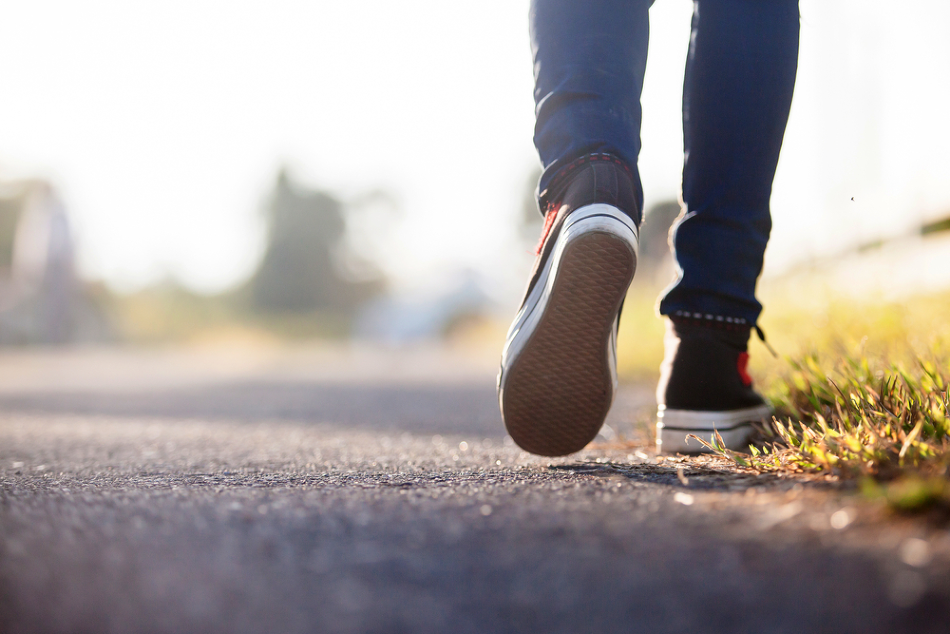
Image Credit: Morakot Kawinchan/Shutterstock.com
The new technology may also offer major advantages to athletes, by aiding them to enhance their running strategy.
From a practical standpoint, that’s invaluable. We’re now able to accurately analyze a person's gait in real time, in real-world environments.
Damiano Zanotto, Study Lead Author and Director, Wearable Robotic Systems Lab, Stevens Institute of Technology
It may appear simple to take a single step, but recording consistent data about an individual’s gait in real-life settings continues to be a significant challenge for scientists.
Force plates and camera-based motion-capture systems, the gold-standard techniques for gait-analysis, are costly and can only be utilized within laboratory settings. As a result, they provide only limited insights about a person’s gait in the real world.
While this limitation could be overcome by evolving wearable technologies like smart shoes, insoles, and pods, the prevalent products cannot offer precise information about a person’s gait.
Zanotto and his research team demonstrated in their study that their smart insole has the ability to provide real-time information on the power, speed, and length of a wearer’s gait with better precision than currently available foot-worn technologies and at a cost that is considerably less than that of conventional laboratory equipment.
(Zanotto and his research team are now seeking a couple of patents regarding the SportSole technology, and a number of professional sporting franchises and companies are closely tracking the researchers’ work.)
The SportSole technology developed by the researchers utilizes gyroscopes and accelerometers to track its own orientation and movement in space, and a wide range of force sensors to identify plantar pressure. This approach enables the SportSole technology to capture as many as 500 readings every second—which is nearly a fivefold enhancement over other wearable gait-analysis tools, including smart pedometers.
But the real magic occurs beyond the shoe. Wearable motion sensors are known to be intrinsically noisy. Zanotto resolved that problem by reducing those 500 measurements per second to only a few significant features and subsequently feeding the results into an AI algorithm. This AI algorithm can quickly obtain gait parameters that are precise to within a couple of percentage points.
That is a major advancement when compared to other AI gait-analysis tools, which are not only computationally intensive but also make it necessary to record the data for later analysis. By contrast, the system developed by the researchers at Stevens Institute of Technology is much more efficient, enabling it to be baked into a microcontroller that provides gait analysis in real-time.
The system also works irrespective of whether the wearer is running or walking, and produces precise results without needing customization or calibration for each of the users. Initial testing indicates that the SportSole technology can also work with young children, from age three onwards and with elderly people suffering from vestibular disorders and whose gait patterns are quite different from those of healthy individuals.
Such reliable precision is indeed remarkable because, in an attempt to reduce errors, a majority of gait researchers utilize high-end sensors that cost $1,000 or more. On the other hand, off-the-shelf sensors used by Zanotto and his research team cost about $100 that relies on AI to obtain consistent data.
We’re achieving the same or better results at a far lower cost, and that’s a big deal when it comes to scaling this technology.
Damiano Zanotto, Study Lead Author and Director, Wearable Robotic Systems Lab, Stevens Institute of Technology
For the time being, the researchers are working to test the SportSole technology for clinical use. With the help of an inconspicuous, wearable gait monitor, scientists can enable remote monitoring of vulnerable populations, improve treatments for those suffering from movement disorders, or provide key insights into the efficacy and safety of novel therapies that may impact balance and gait.